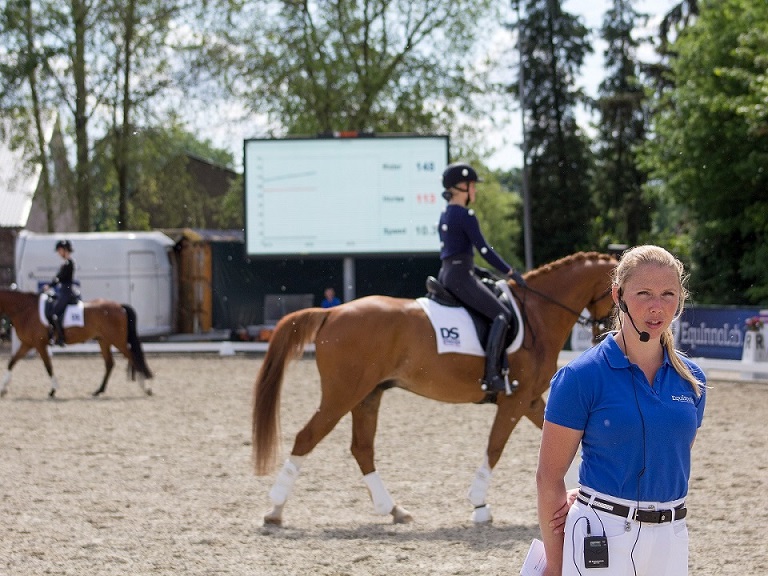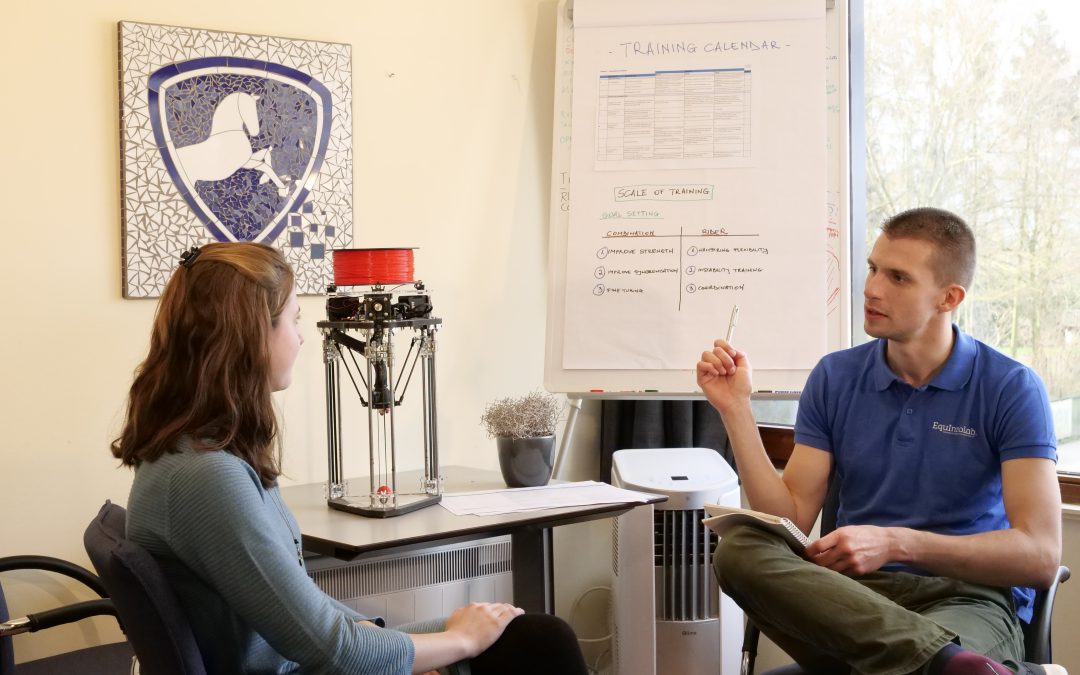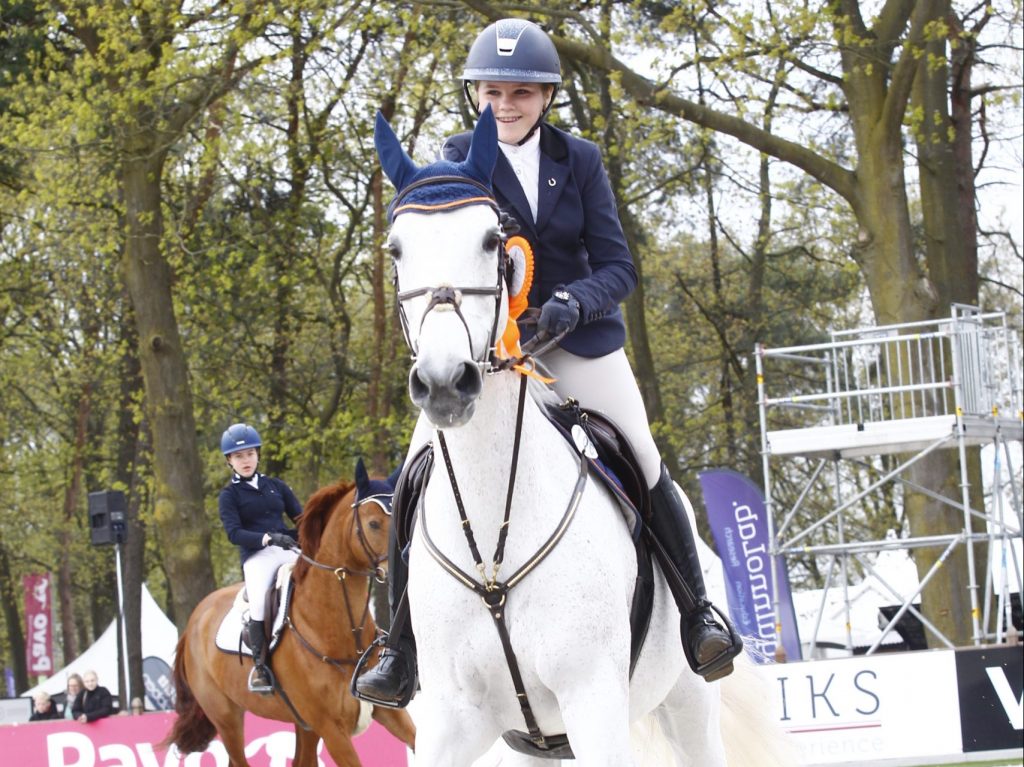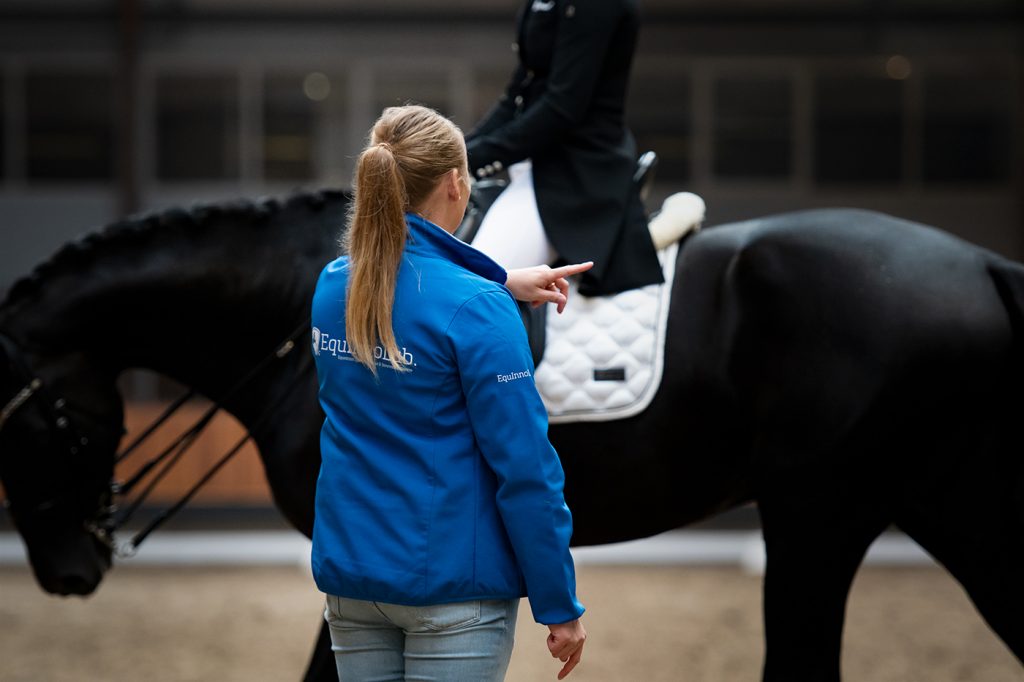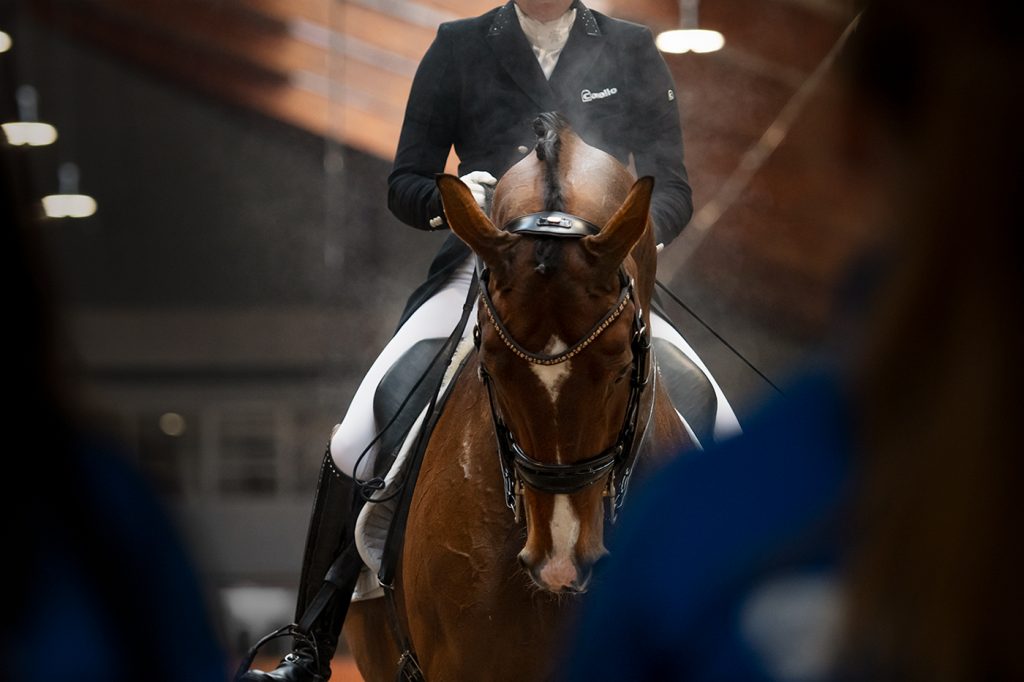We will elaborate on the phenomenon periodization, which is o so common in other sports, but not widely used in equestrian sports. This article will trigger you to start putting logic into your schedule and keep involved wiht
We all have a certain goal with our horse. This can be a big championship but it can also be a long trail ride, or even being able to ride after a long injury. If we want to achieve our goal we have to start training our horse. We want our horse to be as fit as possible on the moment we want to achieve our goal. Secondly, we don’t want our horse to get injured as a result from to heavy training since this will lead to set-backs. Our equine athletes participating in sports are exposed to high training loads and increasingly saturated competition calendars. Most of the competition riders have a couple of competitions each month. Poor load management is a major risk factor for injury. But how do we prepare our horse in such a way that he is really fit and healthy at the moment of your championship of trail ride?
For an optimal level of fitness and to avoid any injuries or set-back we have to think our training through. A well thought out plan can help us preparing our horse. We call this plan a periodization program. With a periodization program you can optimally design a weekly program to get your horse in perfect condition. Since horse-riding contains two athletes it can also help getting yourself in perfect condition. You will both be ready to perform.
Periodization program
The periodization program is design to work towards a certain long-term goal. Periodization of a training is a method by which the training process is divided into smaller, easy-to-manage segments, so called phases of training. The phases such as a preparatory, competition and transition phase are divided into sub-phases. The sub-phases start with a more general program and will get more specific at the end of the phase.
The training blocks of the sub-phases are divided into microcycles of 1 week, mesocycles of 4 weeks and macrocycles which include the whole program. They will contain weeks of light, maintenance, intensive and overload training. It will also contain weeks of recovery training. This last one is very important since there need to be a balance between training and stressing the body and give it the time to recover. The duration of each segment of the training program is depending on the time the athlete need to increase his training status. For this reason a periodization program is always specifically designed for each individual athlete. Every phase of the program should be completed. If for example the preparation phase is not completed because the athlete was not given enough time, performance in a competition phase will not be maximised.
In the periodization program the biomotor abilities are trained. This way the athlete can develop the basic motoric skills needed to perform. The basic motoric skills are divided in; coordination, flexibility, endurance, strength and speed. These skills are needed for any performance both in human as equine athletes. Depending on the discipline you are practicing the level of importance of these skills changes, but all skills need to be developed for a complete overall fitness. In the general sub-phase the basic fitness requirements of these skills are trained. In the specific sub-phase the skill will more is purposefully developed towards the need of the athlete. For example, a jumper needs to have enough strength and speed to excel in a course where a dressage horse needs to be flexible and have enough endurance to perform the whole test. But both horses need a basic endurance, flexibility and strength, it is only specialized toward the needs of the discipline.
Including these motoric skills in your program is not enough. They need to be added in right sequence and with the right training load. If the sequence of the motoric skills is appropriate, each phase of training will increase the next phase. To improve the motoric skills the body needs an external stimuli like a certain training load of physiological stress. The body is very good in adapting itself to this certain training load and physiological stress. By adapting, the body can withstand a higher training load and physical stress without getting fatigued. The fundamental variables of the training load and physiologic stress are the training intensity, duration and the frequency of the training.
A training load can be classified in magnitude. The load can be stimulating, where the load is heavier than the body is used to and the body might adapt to this load. A retaining magnitude is equal to the current level of the athlete, there will be no loss or gain in fitness and is focussed on maintaining the current level. The magnitude can be lower than the current level of the athlete and a decrease in performance will occur. This progress is called detraining. This will also be used in a recovery training.
In summary, the periodization program is divided in smaller segments down to a weekly program. It will focus on improving the basic motor skills needed to perform. These motor skills cannot be trained in one training but will be divided into different training sessions in a week. The frequency, the duration and the intensity will vary through the program. There needs to be a balance between active training and time to recovery from this training. Recovery can be either active rest or some light training. For some intensive training sessions there are more recovery days needed than others. Horses tend to be more sensitive for overtraining and they cannot tell us that they are sore. This is why it is always important to take a critical look to how your horse is behaving during training and in his daily behaviour.
How does our sport use this knowledge?
In most sports the athletes are used to work with a periodization program, mostly made by their trainer. It is part of the education of this athletes to work with a periodization plan. Already from a young age they have knowledge about training principles and how to properly use a periodization program to reach their goals.
For the main part of equestrian the use of a periodization plan is uncommon. In the discipline endurance horses need to perform a long distance without getting fatigued. In this discipline the use of a training program is more used. Most riders are not educated to use such a program. The planning of the training sequences, intensity, frequency and duration is made by their ‘feeling’ of what would be best for their horse of their own schedule. Competitions and other events are mostly not carefully planned and it is not uncommon to have multiple events in one month. This doesn’t have to be a problem when the horse is completely prepared for the events, but sometimes the horse is not ready to compete because he is still in a preparation phase.
Riders are mostly not aware that they can prevent injuries and achieve better results when there horse is fully prepared by using a periodization program. Unconsciously a lot of riders do understand that they need to vary in training load and give their horse some recovery time after a heavy training. More riders are getting aware of the influence of their training and want to know more on how to train their horse.
What does research tell us about periodisation?
Periodization has been researched by different scientific authors. In human athletes this way of planning your training is widely accepted by both athletes and coaches, and has proven to be successful. Therefore this system is very reliable. It is also shown that a poor load management gives a higher risk to injuries. Especially in sport with a saturated competition calendar overtraining is a risk.
For equine athletes working with a training plan is described a good way to train the horse. However, there is still little scientific research about the influences of different training programs and the use of a periodization program. In a study in which horses got an intensive treadmill training it is confirmed that using a proper training program is essential to avoid injuries. Multiple studies in different discipline show that there is an effect on the health and the durability of a horse being used in competitions depending on which training program they are using. Secondly, it is shown that different training programs and management of the horse can lead to different adaptation of the body to the exercise.
How current and valid is the research?
Periodization of training has evolved over centuries with many sport scientist and authors contributing to its development. For human athletes the use of periodization is proven valid and effective. It is also widely applied in most sports.
Only recently, scientist are interested in the use of a periodization program in equine athletes. The few studies that are done containing the effect of training use a more short term training instead of a long term periodization program. The studies do suggest that a specialized training program benefit the horse in its development. The most equine studies are struggling with their sample size, and have a lack on subjects. One of the studies that found an effect of the training program on the health of the horse did have a large sample size.
What is your take-away?
Every rider can benefit from a well thought out training plan. No random training hours or competitions that didn’t go as planned because your horse was simply not ready to compete. A periodization plan can help you train more efficient and reach your goal. It will help you to avoid injuries and set-backs due to overtraining, or help rehabilitate your horse after injury. If you want your horse physical prepared for any goal, no matter what this goal is, a good periodization program makes all the difference.
EquInnoLab. can help you making an individual periodization plan. With a intake conversation we want to know about your training history, injuries, goals and ambitions. Together we define what you want to reach in the following period. A individualized training plan can be adjusted to our own schedule. Whether you want a goal based plan, a yearly plan or a daily training plan, we will carefully design it, using all the intake data. A personalized periodization plan is always a guide for your training. If your horse does not responding properly to the program we can easily adjust it. In this way, together with your feedback the optimal periodization program can be designed.
What do we want to know more?
Scientifically there is little research concerning the effect of specific training programs. It would be interesting to adjust a training program for each individual sport discipline. Every discipline is facing their own challenges and required skills. Scientific research could support the current used training programs or optimize these programs.
Every horse breed is bred for a certain goal. This has led to differences in exterior but also in physiological variables. For example, there are breeds specifically bred for speed, power, endurance. Studies already found differences in anaerobic thresholds between breeds. So this could be interesting to study some more and design an optimal periodization program for every individual horse.
A periodization program only contains the physical aspects of training an athlete. However an multifactorial approach to periodization might be interesting. Including factors like psychologic skills, technical skills and diet might be beneficial for a good periodization program but this is currently not scientifically supported. Even though it is not scientifically supported yet it is accepted by athletes, trainers and coaches that an integrated periodization program can optimize the athlete performance even further. It would be interesting to do more research on the different aspects that can influence the training program. This could make it possible to optimize the periodization program even further.
Sources
- Bompa, T.O., Buzzichelli, C.A. (2019) Periodization: theory and methodology of training (6). Champagn IL: Human Kinetics
- de Bruijn, C.M., Houterman, W., Ploeg, M., Ducro, B., Boshuizen, B., Goethals, K., Verdegaal, E.L., Delesalle, C. (2017) Monitoring training response in young Friesian dressage horses using two different standardised exercise tests (SETs). BMC Veterinary Research. 14;13(1):49
- Giannetto, C., Arfuso, F., Fazio, F., Giudice, E., Pietro, S. D., Bruschetta, D., & Piccione, G. (2017). Different training schedules influence platelet aggregation in show jumping horses. Polish Journal of Veterinary Sciences, 20(1), 149–154.
- Hinchcliff, K.W., Kaneps, A.J., Geor, R.J. (2008). Equine Exercise Physiology: The Science of Exercise in the Athletic Horse. Saunders Elsevier.
- Lönnell, A.C., Bröjer, J., Nostell, K., Hernlund, E., Roepstorff, L., Tranquille, C.A., Murray, R.C., Oomen, A., van Weeren, R., Bitschnau, C., Montavon, S., Weishaupt, M.A., Egenvall, A. (2014) Variation in training regimens in professional showjumping yards. Equine Veterinairy Journal. 46(2):233-238
- Mujika I, Halson S, Burke LM, Balagué G, Farrow D (2018) An integrated multifactorial approach to periodization for optimal performance in individual and team sports. Int. J. Sports Physiol. Perform., 13: 538-561
- Seeherman, H.J. (1991) Treadmill exercise testing. Treadmill installation and training protocols used for clinical evaluations of equine athletes. Veterinary Clinics North America Equine Practice. 7(2):259-269
- Schwellnus, M., Soligard, T., Alonso, J., Bahr, R., Clarsen, B., Dijkstra, H.P., Gabbett, T., Gleeson, M., Hägglund, M., Hutchinson, M.R., van Rensburg, C.J., Khan, K.M., Meeusen, R., Orchard, J.W., Pluim, B.M., Raftery, M., Budgett, R., Engebretsen, L. (2016). How much is too much? (Part 1) International Olympic Committee consensus statement on load in sport and risk of injury. British Journal of Sports Medicine. 50(17)




